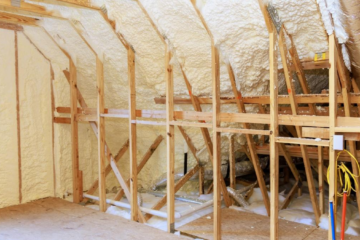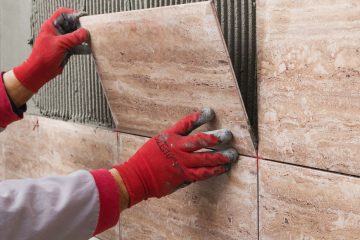Selecting the perfect parasol for your garden can significantly enhance your outdoor experience. Whether you're looking for a shady spot to relax or aiming to protect yourself from harmful sun rays, making an informed choice is key. Here are some essential features to keep in mind while you make your decision.
Types of parasols: standard vs. cantilever
For a more comprehensive selection, you can explore some great options at https://belveo.co.uk/.
Standard parasols
Traditional patio umbrellas are known for their simplicity and ease of use. With a central pole providing stability, these parasols are ideal for placing through the middle of a table. The design enables straightforward setup and movement within the garden. Available in various shapes and sizes, they cater to different spatial requirements.
Cantilever parasols
Cantilever parasols offer a more flexible shade solution as they don't have a central pole that could obstruct space. Instead, the support pole is positioned on one side, allowing the canopy to hover. This type is excellent for covering larger areas, like seating arrangements or lounge chairs, without any hindrance. Consider this style if adaptability and space utilization are important factors.
Materials: durability and style
Fabric choices
The fabric's quality plays a crucial role in the longevity and effectiveness of a parasol. Popular options include acrylic, polyester, and olefin. Acrylic fabrics are renowned for their fade-resistant properties and softness, making them a premium option. Polyester offers a more economical yet durable choice, though it may not be as resistant to UV rays. Olefin stands out for its resilience against moisture and stains, proving itself ideal for humid climates.
Structure materials
The structure of the parasol, consisting mainly of the pole and ribs, should be crafted from sturdy materials to ensure longevity. Common materials include aluminum, wood, and fiberglass. Aluminum is lightweight, resistant to rust, and easy to move, making it highly popular. Wood adds an elegant, classic look but requires maintenance to prevent weather damage. Fiberglass provides flexibility and strength, able to withstand strong winds better than other materials.
Mechanisms and functionality: ease of use
Opening mechanisms
The ease with which you can open and close your parasol impacts daily usability. Crank systems are user-friendly and require minimal effort, ideal for those who seek convenience. Push-up mechanisms mimic the action of traditional umbrellas and often present fewer moving parts, leading to potentially fewer mechanical failures over time.
Tilt functions
Parasols with tilt functions offer adjustable angles to shield against the changing positions of the sun throughout the day. Auto-tilt mechanisms adjust with just a crank turn, while manual tilts necessitate hands-on adjustment. Choose based on how frequently you'll need to change the parasol's angle; frequent users might prefer auto-tilt for its ease.
Design considerations: blending with your garden aesthetics
Shape and size
 Parasol shapes commonly include round, square, and rectangular forms. The shape should complement both your garden layout and furniture arrangement. Round parasols suit small tables, while square and rectangular designs are advantageous for larger dining sets and more extensive lounging areas. Ensure the size covers the intended area adequately while maintaining a harmonious visual appeal.
Parasol shapes commonly include round, square, and rectangular forms. The shape should complement both your garden layout and furniture arrangement. Round parasols suit small tables, while square and rectangular designs are advantageous for larger dining sets and more extensive lounging areas. Ensure the size covers the intended area adequately while maintaining a harmonious visual appeal.
Color and patterns
The color and pattern of the parasol fabric can influence the overall ambiance of your garden. Lighter colors reflect heat and may feel cooler under the sun. Darker hues, while more likely to absorb heat, can provide a striking contrast against greenery. Patterns can add a decorative element, turning the parasol into not just a functional item but also a statement piece.
Weather resistance: all-season readiness
Uv protection
A high-quality parasol should provide sufficient protection against UV rays. Fabrics treated for UV resistance not only shield you and your loved ones from harmful sun exposure but also retain their color longer. Check the UPF (Ultraviolet Protection Factor) rating to evaluate effectiveness.
Wind resistance
Consider the wind conditions typical in your area as this influences the choice of parasol structure. Models with vented canopies allow air to pass through, reducing the risk of tipping over. A robust frame material, like fiberglass, enhances wind resistance. For particularly windy areas, additional anchor weights can secure the parasol firmly.
Maintenance and care: ensuring longevity
Cleaning the fabric
The fabric will inevitably attract dust, pollen, and other debris. Most outdoor fabrics are designed to be low-maintenance, but occasional cleaning extends their life. Remove the canopy periodically and clean it according to the manufacturer's guidelines, using mild soap and water. Allow it to dry completely before reattaching to prevent mold growth.
Storage solutions
Proper storage during off-seasons, or during severe weather, is essential. Store your parasol in a dry, covered location to avoid unnecessary wear and tear. Use protective covers specifically designed for parasols as an added layer of defense. If feasible, disassemble the parasol components for more compact storage.
By focusing on these aspects, you'll be equipped to find a durable parasol tailored to your needs and preferences.


